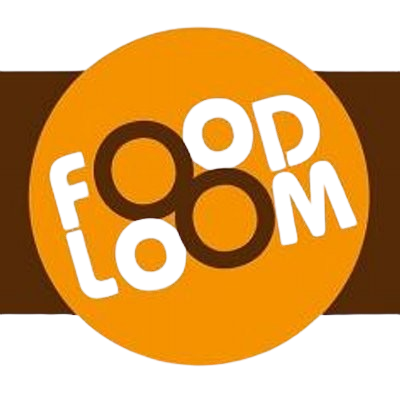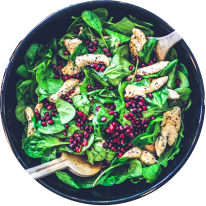Empowering Your Choices Navigating the Grocery Aisle with Food Labels
In today’s bustling grocery stores, the sheer variety of food products can often feel overwhelming. However, a powerful tool lies within your grasp to simplify these choices and align them with your personal health goals: food labels. Far from being mere regulatory text, these labels are comprehensive guides, providing essential insights into a product’s nutritional composition and ingredients. By understanding how to interpret them, consumers can confidently select items that support a balanced diet and overall well-being FDA.
Food labels demystify what goes into the foods you eat, offering transparency that allows you to make informed decisions for yourself and your family. They are particularly crucial for individuals managing dietary restrictions, allergies, or specific health conditions, as they empower a proactive approach to nutrition rather than a reactive one. Taking the time to learn the key components of these labels is an investment in your health, enabling you to identify nutritious options and avoid those that might not serve your best interests.
Decoding the Nutrition Facts Panel Start with Serving Size
The **Nutrition Facts panel** is arguably the most critical section of any food label, serving as a snapshot of the product’s nutritional value. Its prominent placement on nearly all packaged foods makes it an indispensable resource for consumers. When you first glance at this panel, your eyes should immediately be drawn to the **serving size**. This detail is paramount because all other nutritional values listed – from calories to fats to sugars – are calculated based on this specific amount American Heart Association.
It’s a common mistake to assume that an entire package constitutes a single serving. In reality, many food packages, especially those that appear to be for individual consumption (like a bag of chips or a frozen meal), often contain multiple servings. If you consume the entire package, you must multiply all the listed nutritional values by the number of servings it contains to get an accurate total. Failing to do so can lead to a significant underestimation of your calorie and nutrient intake, potentially derailing your dietary goals American Heart Association. Being mindful of serving sizes is the first and most crucial step in effectively utilizing the Nutrition Facts panel for healthier eating.
Calories Nutrients and Daily Values What to Limit and What to Seek
Directly beneath the serving size, you’ll find the **calories** per serving, which indicates the amount of energy provided by that food. Following this, the panel categorizes various nutrients into two main groups: those you should aim to limit and those you should strive to consume more of for optimal health.
Nutrients to limit include **saturated fat**, **trans fat**, **cholesterol**, and **sodium**. Consuming these in excess can contribute to various health issues, such as an increased risk of heart disease (from saturated and trans fats) and high blood pressure (from sodium) Mayo Clinic. Monitoring these levels is vital for maintaining cardiovascular health and managing chronic conditions. Products with lower amounts of these specific nutrients are generally preferable.
Conversely, the Nutrition Facts panel also highlights nutrients that are essential for good health and should be prioritized. These often include **dietary fiber**, **vitamin D**, **calcium**, **iron**, and **potassium** FDA. Dietary fiber supports digestive health and can help regulate blood sugar, while calcium and vitamin D are crucial for bone health. Iron is vital for oxygen transport in the blood, and potassium plays a key role in maintaining fluid balance and blood pressure. Seeking products that are good sources of these beneficial nutrients can significantly enhance your diet’s overall quality FDA.
To help you put these numbers into perspective, the **”% Daily Value” (%DV)** is provided for each nutrient. This percentage indicates how much a single serving of the food contributes to your daily recommended intake for that nutrient, based on a 2,000-calorie diet. As a general rule of thumb, a 5% DV or less is considered low, suggesting the food is not a significant source of that nutrient. Conversely, a 20% DV or more is considered high, indicating the food is a good or excellent source. This quick reference tool allows for easy comparison between products and helps you balance your intake of various nutrients throughout the day American Heart Association.
The Ingredient List Uncovering What’s Really Inside Your Food
Beyond the numerical data of the Nutrition Facts panel, the **ingredient list** offers a textual, comprehensive dissection of a product’s composition. This section is invaluable for understanding the true nature of what you’re consuming. Ingredients are meticulously listed in descending order by weight, meaning the item present in the largest quantity appears first, and the smallest quantity appears last. This arrangement provides a clear hierarchy of what constitutes the bulk of the product, enabling consumers to identify primary components at a glance.
The ingredient list is particularly crucial for identifying potential pitfalls like hidden added sugars, artificial additives, and, most importantly, allergens. Added sugars often masquerade under various names beyond just “sugar,” such as high-fructose corn syrup, dextrose, maltose, corn syrup solids, fruit juice concentrate, or sucrose. Spotting multiple forms of these caloric sweeteners within the first few ingredients can indicate a product with a significantly high sugar content, even if the Nutrition Facts panel’s total sugar number doesn’t immediately seem alarming FDA. For those aiming to reduce sugar intake, scrutinizing this list is essential.
Furthermore, this section is a lifeline for individuals with food allergies. By law, major food allergens must be clearly declared on labels. These common allergens include milk, eggs, peanuts, tree nuts (like almonds, walnuts, and cashews), soy, wheat, fish, and shellfish Food Allergy Research & Education (FARE). The ingredient list often highlights these allergens in bold, specifies them in parentheses, or includes a “Contains:” statement near the bottom of the list for quick identification. For individuals who must avoid certain ingredients for health or dietary reasons, a thorough review of this list is non-negotiable for safety and peace of mind.
Beyond Buzzwords Navigating Marketing Claims on Food Packaging
In the competitive world of food marketing, packaging is often adorned with enticing claims designed to catch your eye and influence your purchasing decisions. However, it’s crucial to approach these marketing buzzwords with a healthy dose of skepticism. Terms like “natural,” for instance, are frequently used but often unregulated, carrying no standardized definition or guarantee that the product is inherently healthier or less processed. A food labeled “natural” might still contain significant amounts of sugar, salt, or fat Consumer Reports.
Another popular claim is “organic.” While the term “organic” does signify adherence to specific USDA standards concerning farming and processing practices—meaning no synthetic pesticides, fertilizers, GMOs, or antibiotics for livestock—it doesn’t automatically equate to a universally “healthy” product USDA. An organic cookie, for example, is still a cookie; it can be high in sugar and fat, even if its ingredients were organically sourced. Similarly, “gluten-free” simply means the product does not contain gluten; it doesn’t necessarily mean it’s low in calories or high in nutrients. Many gluten-free alternatives can be highly processed and contain added sugars or unhealthy fats to compensate for texture and flavor.
To avoid being swayed by marketing ploys, always make it a habit to look past the front of the package. The most reliable information for evaluating a food product’s healthfulness will consistently be found on the **Nutrition Facts panel** and the **ingredient list** FDA. These sections provide objective, fact-based data that empowers you to make truly informed decisions, ensuring your choices align with your health and dietary goals rather than clever advertising.
Sources
- American Heart Association – How to Understand and Use the Nutrition Facts Label
- Consumer Reports – Your Guide to Food Label Claims
- FDA – How to Understand and Use the Nutrition Facts Label
- Food Allergy Research & Education (FARE) – Food Allergy Labeling Laws
- Mayo Clinic – Nutrition and Healthy Eating: Nutrition facts: How to get the most out of your food label
- USDA – Organic
Conclusion:
Food labels are more than fine print—they’re practical guides to healthier eating. By focusing on serving sizes, calories, nutrients, and ingredient lists, you gain control over your diet and avoid being misled by buzzwords like “natural” or “gluten-free.” With careful label reading, you can spot hidden sugars, manage allergens, and prioritize nutrient-rich choices. Ultimately, food labels empower you to shop smarter, eat better, and align your meals with your health goals.














